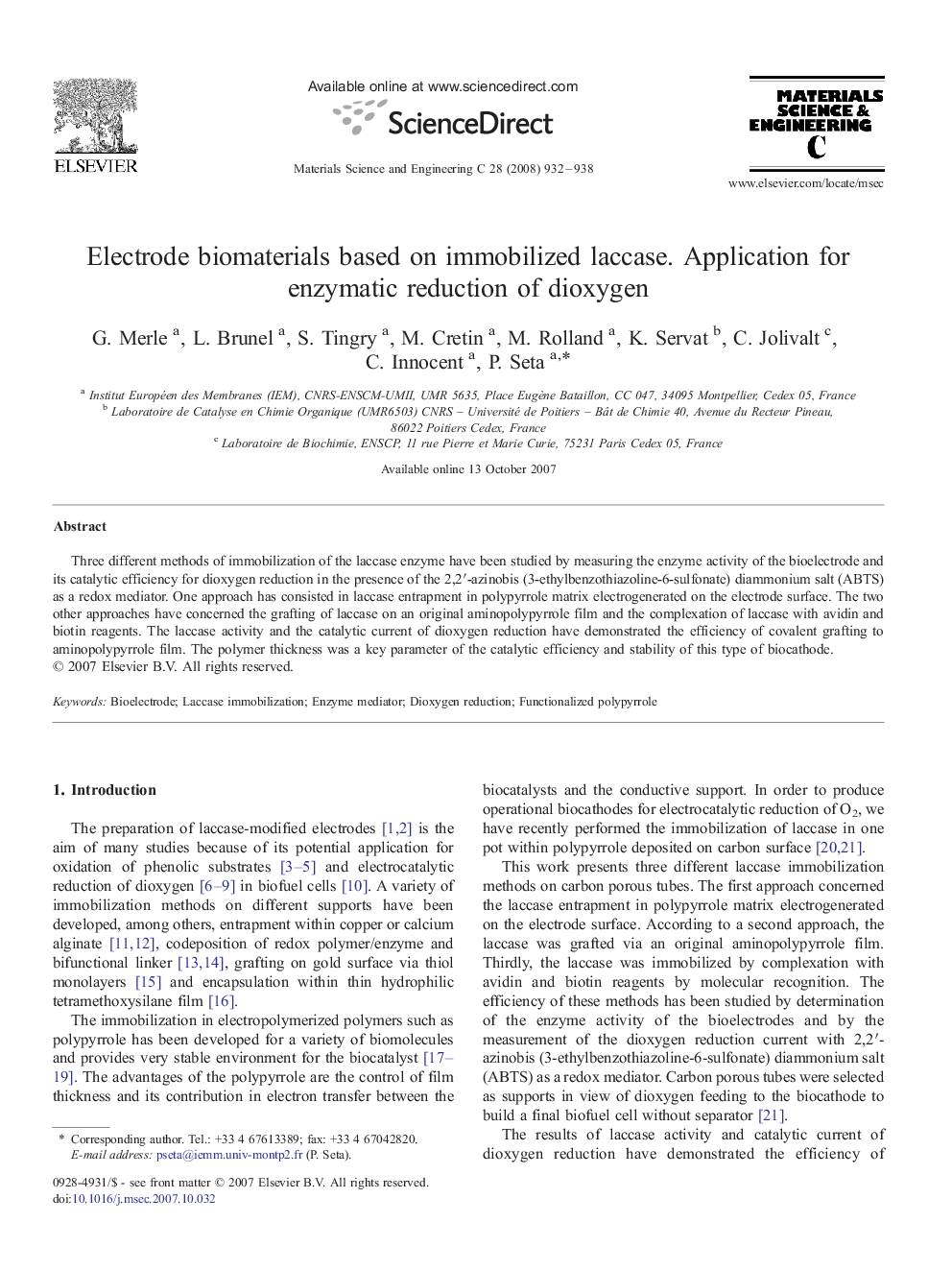| Article ID | Journal | Published Year | Pages | File Type |
|---|---|---|---|---|
| 1431112 | Materials Science and Engineering: C | 2008 | 7 Pages |
Three different methods of immobilization of the laccase enzyme have been studied by measuring the enzyme activity of the bioelectrode and its catalytic efficiency for dioxygen reduction in the presence of the 2,2′-azinobis (3-ethylbenzothiazoline-6-sulfonate) diammonium salt (ABTS) as a redox mediator. One approach has consisted in laccase entrapment in polypyrrole matrix electrogenerated on the electrode surface. The two other approaches have concerned the grafting of laccase on an original aminopolypyrrole film and the complexation of laccase with avidin and biotin reagents. The laccase activity and the catalytic current of dioxygen reduction have demonstrated the efficiency of covalent grafting to aminopolypyrrole film. The polymer thickness was a key parameter of the catalytic efficiency and stability of this type of biocathode.
